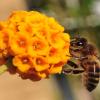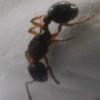1. Location: Southen England
2. Date of collection: Around a month ago.
3. Habitat of collection: Sandy managed pine forest.
4. Length (from head to gaster): 10mm
5. Color, hue, pattern and texture: Shiney black
6. Distinguishing characteristics: Both the queen and workers have long spindely legs compared to the Lasius Niger (why I don't think its simply a Lasuis niger.) The first generation of workers are also a lot bigger than Lasius Niger first generation workers. (Also what was the specific name for first gen workers again?)
7. Distinguishing behavior: Queens seem to move around a lot more than Lasius niger and Lasius flavus (could be because of extra stress or maybe they are just more active)
Sorry for the bad quality images. I can try to get better.
Thanks ![]()

















